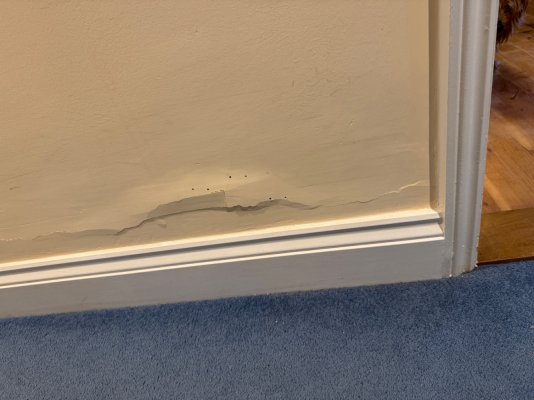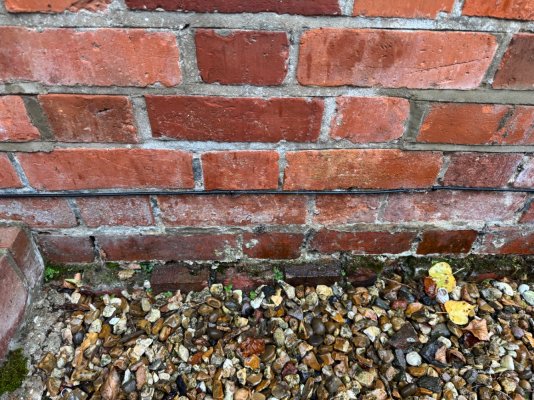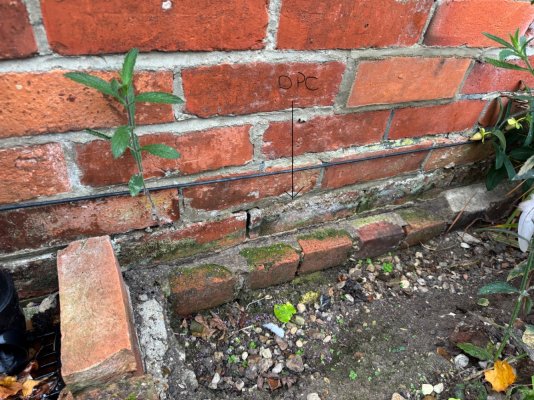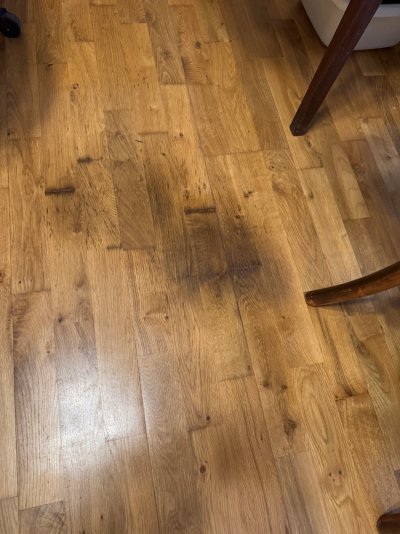I have recently moved into a late Victorian detached brick built house. Some walls have a cavity, some do not. Some 25 years ago the wood floors were all been taken up and replaced with a concrete floor with a DPM. Oddly, above these floors, a layer of polystyrene insulation has been laid and then a further polythene DPM laid over than then chipboard + carpets or an engineered wood (pine floor).
Every wall in the house has blown plaster to about 15cm above the skirtings. The plaster is Gypsum.
About 10 years ago, the village was flooded by the river (20m from my front door) bursting its banks. I understand that my house was not flooded but the water table under the house must have been almost level with the ground. I don't believe the house has been decorated in since then.
The house has a slate DPC which was covered outside with soil until recently. It is now exposed.
I have purchased a damp meter and it is throwing up some readings that I don't know how to interpret. 50% of the walls are under 7% and even though they have blown plaster, they are 'dry'. 25% are around 9% which is 'medium' according to my meter and a further 25% are 20+%..... wet, though not to touch.
The skirtings are all over 25% and therefore 'wet', though dry to touch with no mould.
Finally, the house has not really been lived in for around 10 years.
I am wondering whether a combination of a very high water table some time ago (the river is currently dry) and the earth banked-up over the DPC could be responsible for the wet walls and plaster coming off and whether i strip off the plaster to 30cm above skirting level, re plaster with gypsum (i know) and paint then hope for the best..... OR, strip all of the plaster and re-do with lime which will take ages and cost an absolute packet? Maybe it would be cheaper to replace the bottom 6" every 5 years or so if the problem recurs?
Any advice appreciated!
Photos of Outside bricks now exposed, blown plaster, dark spot on wood floor which is 25% moisture vs surrounding floor which is 8%.




Every wall in the house has blown plaster to about 15cm above the skirtings. The plaster is Gypsum.
About 10 years ago, the village was flooded by the river (20m from my front door) bursting its banks. I understand that my house was not flooded but the water table under the house must have been almost level with the ground. I don't believe the house has been decorated in since then.
The house has a slate DPC which was covered outside with soil until recently. It is now exposed.
I have purchased a damp meter and it is throwing up some readings that I don't know how to interpret. 50% of the walls are under 7% and even though they have blown plaster, they are 'dry'. 25% are around 9% which is 'medium' according to my meter and a further 25% are 20+%..... wet, though not to touch.
The skirtings are all over 25% and therefore 'wet', though dry to touch with no mould.
Finally, the house has not really been lived in for around 10 years.
I am wondering whether a combination of a very high water table some time ago (the river is currently dry) and the earth banked-up over the DPC could be responsible for the wet walls and plaster coming off and whether i strip off the plaster to 30cm above skirting level, re plaster with gypsum (i know) and paint then hope for the best..... OR, strip all of the plaster and re-do with lime which will take ages and cost an absolute packet? Maybe it would be cheaper to replace the bottom 6" every 5 years or so if the problem recurs?
Any advice appreciated!
Photos of Outside bricks now exposed, blown plaster, dark spot on wood floor which is 25% moisture vs surrounding floor which is 8%.




